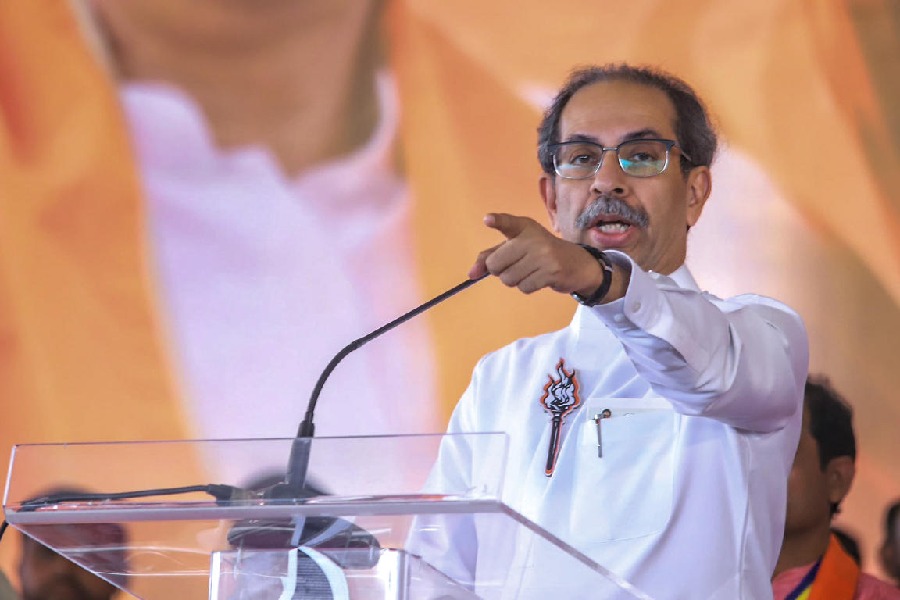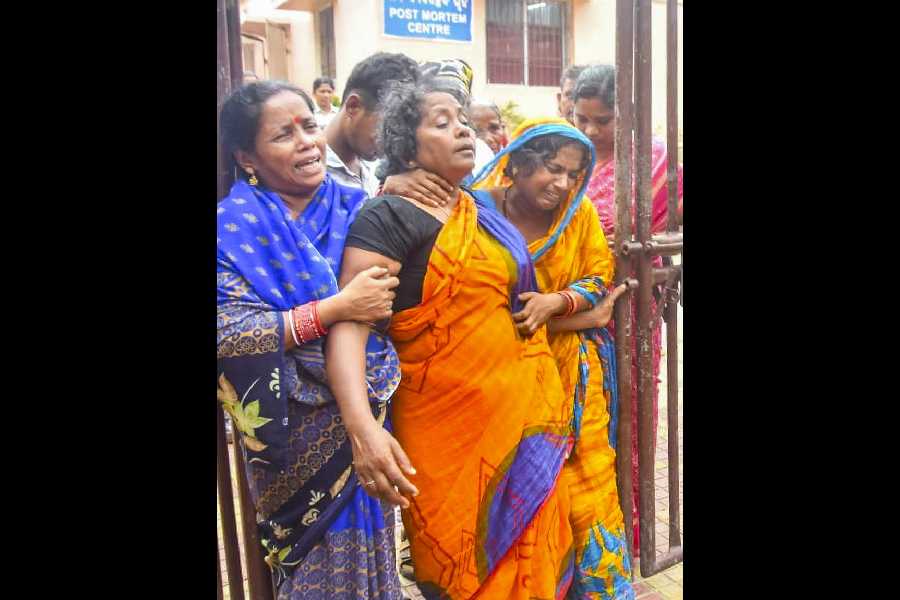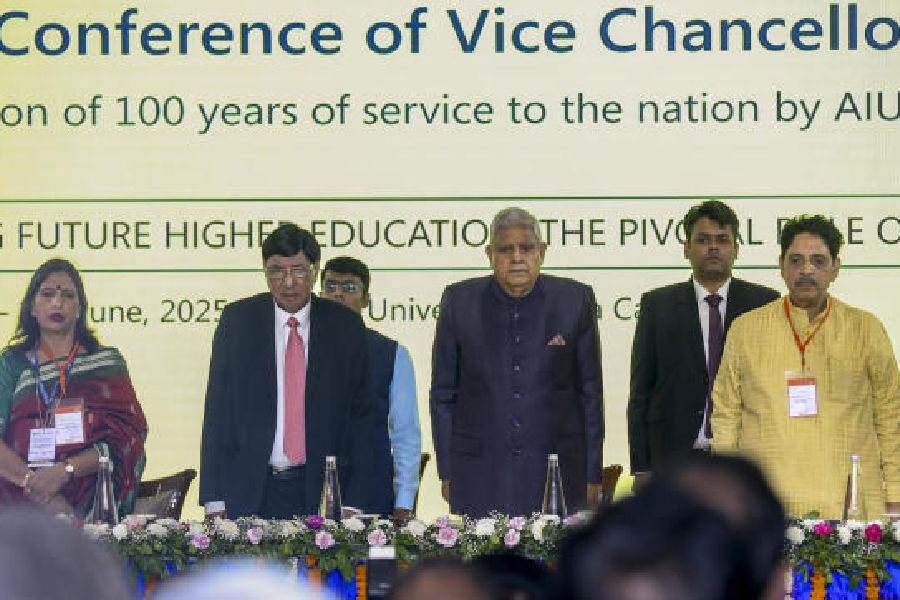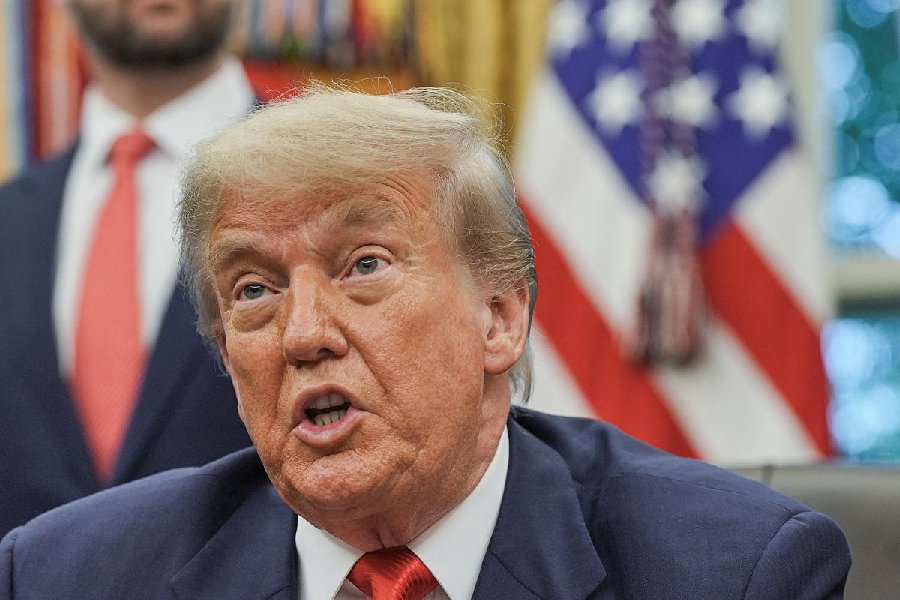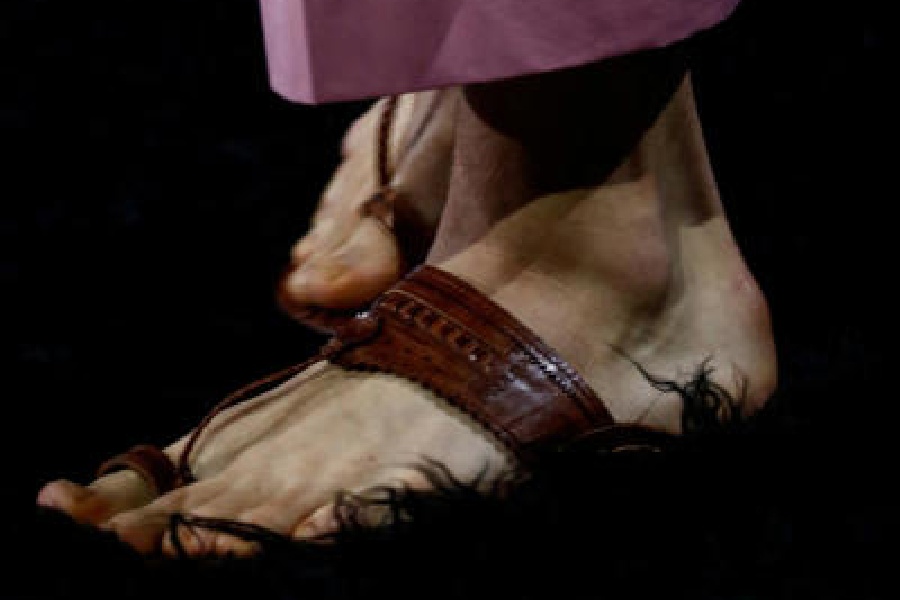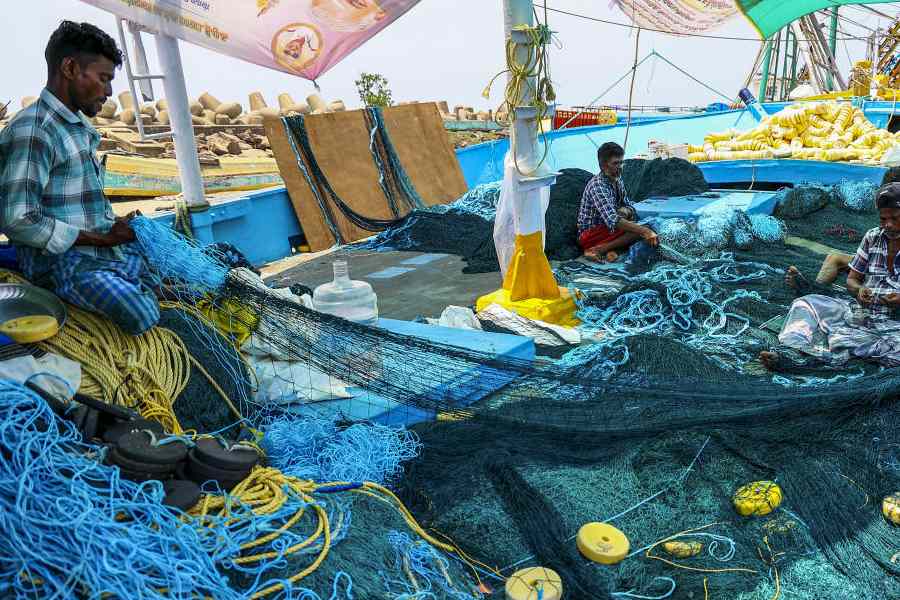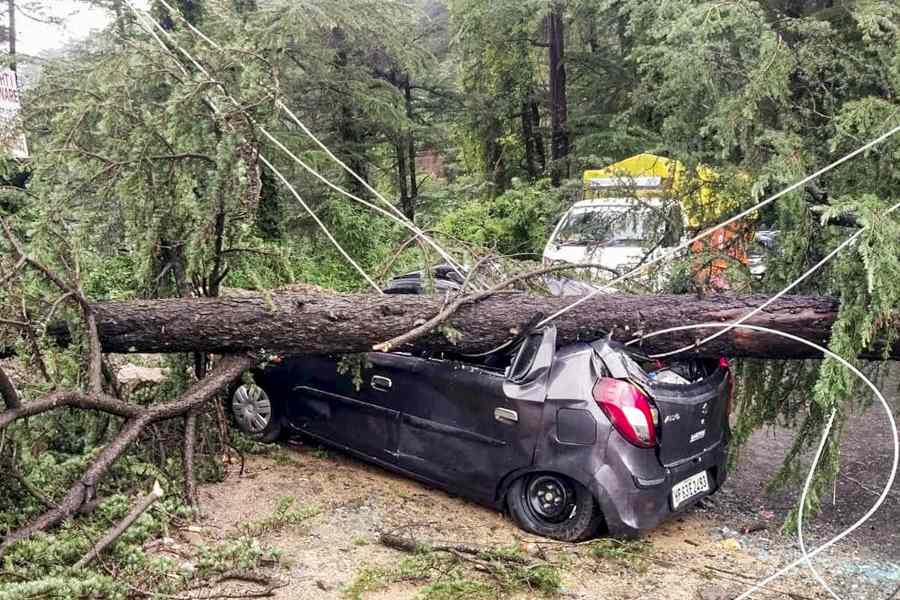 |
| Look at cricket. You can make a living out of it. Other sports are coming. Professional leagues are coming up in other sports, like ISL has, and in three to five years, they will start demanding young talent |
Six years after his retirement, Anil Kumble still looks fit enough to take the field. India’s highest wicket-taker (619 Test wickets) is bowling on a different pitch these days with the dream of scouting talent from school grounds. In town on Saturday as the brand ambassador for Pearson India, a leading learning company, he spoke to t2 about the need for sports infrastructure at the grassroots, memories of Eden Gardens and life as a father.
In his autobiography Open, Andre Agassi gives a graphic account of his years at Nick Bollettieri’s academy where sports and schooling went together. Do you see such a system coming to India anytime soon?
That’s the passion with which Vasanth Bharadwaj (former table tennis player) and I have created Tedvic. Our intention is to create something like that in the near future. We are already there in various schools and through this partnership with Pearson, which is in the education sector, we are giving structured coaching in table tennis, cricket, badminton, basketball and chess. Soon we will start soccer and tennis. We also have traditional sports like kho-kho and lagori, a game with seven stones, which we have named vibgyor. You throw a soft ball from a distance and the stones that fall have to be put back by the team while the opponent tries to hit the person doing it below the knees. If they succeed, he is out. We have structured it with a rule book. Such sports are a natural way of developing skills –– balance, running, changing direction while running fast… you are building muscles through all this.
 |
| I am glad that my colleagues are getting into other sports but I don’t want to be competing with Sachin, Sourav, Virat and Dhoni in football. I am happy with the grassroots level. Maybe if some of my boys are doing well, I will call up Sourav or Sachin and tell them: “This boy has talent. Take him in your team.” |
How much time do these schools give to sports?
We look to teach a kid at least three games over two years or less. There is a reporting and monitoring programme, keeping the principal and the parents in the loop. In India, parents decide which sport the kid plays. Here we are developing them and then telling the parent that your kid is better at this sport than that. If the kid does not have sports in his DNA, we also say that.
But has the country reached a stage where you can tell parents that a kid is better in sports than in studies?
Yes. Look at cricket. You can make a living out of it. Other sports are coming. Professional leagues are coming up in other sports, like ISL has, and in three to five years they will start demanding young talent. We look at the top rung and say, “Why are we not winning gold medals in Olympics or Commonwealth Games?” It is only by chance that we are getting the few talents. But if we do not have the infrastructure at the grassroots, talent will not come through. That’s what we do and the best way to do that is to partner with schools. We are also encouraging corporate bodies to partner us to take this to government and semi-aided schools.
In your childhood, was it more play and less studies?
I had to balance it out. I come from a typical south Indian family where education is paramount. Growing up, we had fewer distractions than now –– no video games or television and the little time spent on the road was trying to manoeuvre traffic. So we had more time to go out and play. If I had done badly in school maybe I wouldn’t have become a cricketer. In sports, there is no guarantee of success. That’s what I told the kids today at Julien Day School (which has entered into a partnership with Pearson). In cricket, only 11 can play, in basketball only five. In individual sports, it’s even tougher. You need a back-up. People think if you play you have to give up studies. That’s a wrong notion. Sport helps education.
At 13, you started playing club cricket. How serious was it?
It was like for any other teenager. Karnataka cricket is all about clubs. You had to represent one and rise through the ranks.
When you were appearing for the mechanical engineering finals, you had already made your India debut in ODIs. What was that period like?
It was quite tough. I had to sit for exams and go on tour. I toured England in 1990. I wrote seven papers and joined the team late because I had to clear at least 50 per cent of the exams to pass and I had 13 subjects. So I took six and carried forward seven to the second year. I was to write the supplementary exams in December. But the next year in November-December, we had Sri Lanka touring India. So I missed three exams for that. Then a Ranji match came up. So I played Ranji Trophy and missed two more exams. That means I wrote just two of the seven and had to carry over five papers. There were 12 papers in the third year, to which these five were added. In my third year, luckily there were no international commitments, so I could finish off everything at one go. So while other students were going on alternate days, I was writing exams every single day! The summers were free in those days. There was no IPL. One could study in those two months.

I saw the first 20 runs and then the highlights. I guess the rest of it was also like highlights, the way he (Rohit Sharma) batted! When I saw the score I didn’t believe it. India 404, one can still believe. But one batsman scoring 264? Out of the world!
Would you carry textbooks on tour?
I would, only to make me feel less guilty. But beyond one or two days, I don’t think I got time to sit down with books.
Did you and Sachin Tendulkar ever discuss this?
Studies? No, never. (Laughs) That was never our favourite topic of conversation.
Coming to your children, how hands-on are you as a father?
I help with homework and projects. I search the Net and take some printouts. The school is pretty strict. The mother takes the brunt (smiles). I play a bit of badminton with them. My oldest, Aaruni (from wife Chetana’s first marriage), is 19. She has learnt Bharatanatyam and is doing chartered accountancy. Mayas, 10, plays a bit of cricket. He called me just now to say he is attending a cricket coaching camp this afternoon. He and Svasti, 8, play badminton. At Tedvic, we run camps in clubs too. They go there. They are still young. Not everyone is Sachin Tendulkar and plays for India at 15! By the time they are 13, if they are sport-oriented, I’ll push them. I’d like to have at least one of them play at a proper level. Even otherwise, I’d like them to make sports a part of their lives.
You had said one would have to wait for your side of Monkeygate (when Andrew Symonds accused Harbhajan Singh of racial abuse in the Sydney Test) till your autobiography was out. How far have you progressed?
Not much. Three-four years ago I started. I did not write, but was speaking into a dictaphone. But Karnataka cricket administration took away three years of my retired life (as president of the state association). Currently Tedvic, Mumbai Indians and this association with Pearson are taking up my time.
Would you be getting into any sports league?
I am glad that my colleagues are getting into other sports but I don’t want to be competing with Sachin, Sourav, Virat and Dhoni in football. I am happy with the grassroots level. Maybe if some of my boys are doing well, I will call up Sourav or Sachin and tell them: “This boy has talent. Take him in your team.”
Let’s talk about Eden Gardens and Anil Kumble....
Lots of memories. Winning the Hero Cup, then the Test victory against England in 1993. That was my comeback season. Azhar (Mohammad Azharuddin) scored a brilliant 180. We won against Australia. I equalled Kapil Dev’s record here against South Africa. We won the match. We beat Pakistan in 2004-05. I remember getting Younis Khan out, stumped on the leg side by Dinesh Karthik first ball on the fifth day. That was the turning point of the match. Sourav (Ganguly) was captain. I got seven wickets. I think that was the best match I have played in because it was tough going. Then I got an 88 batting here against South Africa….
But you ran out of partners as Azhar played a reckless shot after getting his century....
Yes, I was upset. I had told him: “Don’t get out now. I stayed for your hundred, now you stay for mine.” But he got out. So I was very upset. The Mumbai Indians (MI) victory here in the IPL final was also a high, though I was not playing myself.
 |
Eden graph. High: Victory in the Hero Cup where he picked up 6 for 12 in the finals. Low: Losing to Sri Lanka in the semi-finals of the 1996 World Cup. |
MI captain Rohit Sharma played a great innings here last week.
Yes, brilliant. I saw the first 20 runs and then the highlights. I guess the rest of it was also like highlights, the way he batted (laughs)! When I saw the score I didn’t believe it. India 404, one can still believe. But one batsman scoring 264? Out of the world!
Finally, you joined Twitter recently.
Yes, on my birthday (October 17). My daughter has been on it ever since Twitter started and also on Facebook. So I am a late entrant. It is nice to be interacting with people as things happen and they also respond. I am enjoying it a lot.
Sudeshna Banerjee
Anil Kumble’s picture: Pabitra Das
What’s your message for Anil Kumble? Tell t2@abp.in


